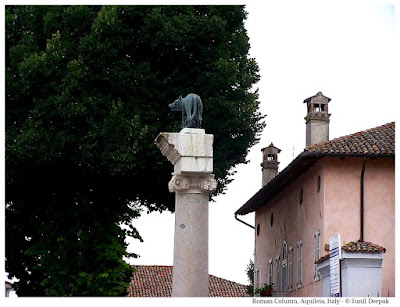Bibione is a holiday town along the Adriatic coast in the north-east of Italy, north of Venice. Thus if you are planning holidays in Bibione, this post is for you.
Bibione History
Bibione was a marshy area till 1960s. During 1970s, the marshes were filled and slowly Bibione started to develop as a holiday destination.
The first houses in Bibione had come up in the eastern part of the beach, around Corso del Sole and the area that is now known as "Lido dei Pini". Since those early days, the city grew, mainly towards the west in areas called Pineta and Lido del Sole, with hundreds of hotels and holiday homes and is now one of the biggest holiday centres in the north of Italy.
Over the past three decades, for our family our annual summer holidays in Bibione are a lovable tradition.
The nearest airport is Venice airport about 90 km away. Bibione is connected to Venice and the airport by taxis, boats and buses. The nearest railway station is in Latisana, about 25 km away. Latisana is connected to Bibione by taxis and buses. The bus from Latisana city centre will drop you near the Bibione city centre.
For staying in Bibione, there are a lot of options - apartments, independent houses, residences and hotels.
Personally I am not very fond of lazying around on the beach. I did it when our son was small and he used to love the beach, but now I usually go to the beach only for a swim or an early morning/evening walk. However, if you like to spend time on beach, in Bibione you can find opportunities for boat riding and paddle-boat riding.
If you plan to spend lot of time on the beach, you may prefer to rent an umbrella and some reclining chairs. Beach is divided into areas, each with its own distinctive colours of umbrella, managed through a kiosk where you can rent per day, per week or for a month.
If you do not mind carrying your own umbrella and chairs, in between, there are many free areas. Apart from the free beaches, there are also areas with umbrellas and chairs where dogs are allowed. For example, dogs are allowed at the Pluto beach in Lido dei Pini.
However, Bibione is not just about soaking sun, seaside walks and swims. The surrounding countryside is also good for nature walks and bicycle rides. You will find farmers in the fields, country houses selling fresh vegetables, ducks walking across the path and many horse-rearing places where you can try horse-riding lessons.
For example, at Lido dei Pini, a new passage has been built along the sea, that passes through a protected forest, and takes you to the lighthouse and Tagliamento river. Similar passages close to the sea are also available near the Bibione Thermal Baths and in Pineta.
If you prefer something more adrenalin stimulating, you can try kiting, water-scooters, speed boats, or wind-surfing. Many schools for teaching and renting equipment for the adventure sports and boats are based along the seaside.
The city is full of restaurants, pizzerias and take-aways. However, most of the restaurants offer Italian cuisine and it is not easy to find places offering Chinese, Asian, African or South American cuisines. There are some really wonderful ice cream parlours in Bibione where you can try some special flavours of the famous Italian ice cream.
Bibione city Centre
If you do not wish to go out of the city, you can go for a walk in the city centre, full of shops and amusement arcades for children. Corso Europa, the main central street of Bibione is reserved for pedestrians and is the place to spend a couple of hours in the evening without getting bored.
Bibione has a famous thermal bath with qualified staff. You can go there for specific therapies as well as, for massages and rejuvenation therapies. Personally I have not been there, but my wife has been there many times and vouches for this place.
Day-trips from Bibione
Bibione provides some wonderful opportunities for discovering the art, culture and history of the neighbouring medieval towns such as Caorle, Portogruaro, Splimbergo, Redipuglia, Aquileia and Grado.
There are also some amusement parks such as Liliput land and the zoo near Lignano.
Conclusions
Over the past four decades, we have spent so many wonderful days in Bibione, swimming, going for walks and visiting nearby medieval towns during day-trips. In this period, the city has grown and today offers exciting opportunities for all kinds of entertainment and relaxation.
***


























































